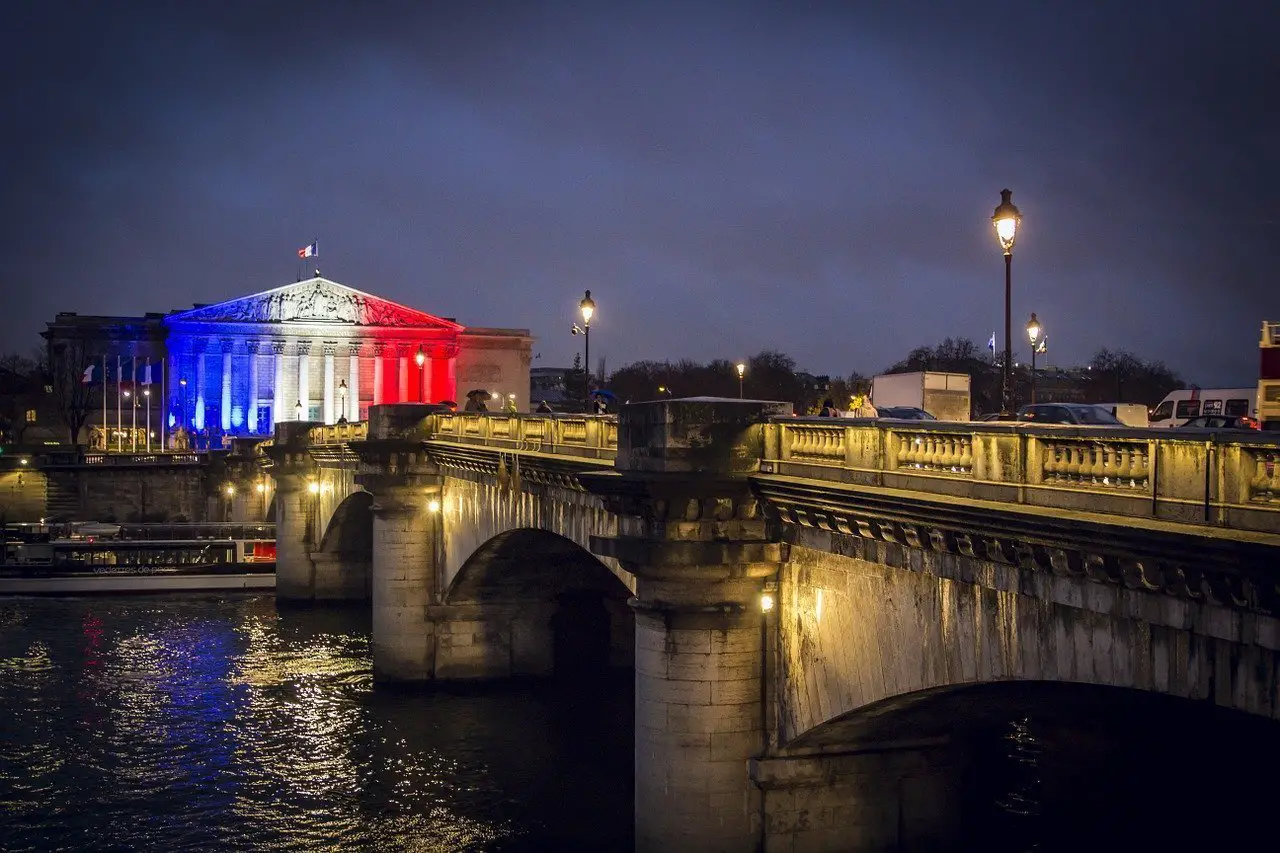Every country has its flag, and each flag has a meaning and history behind it. The French flag is no exception. Also called as the French Tricolore or ‘Le drapeau Tricolore’ in French, the French flag is one of the most interesting and historical flags in the entire European history. The French Tricolore has three bands, all vertical, in the order of Blue, White, and Red. The Blue and the Red are colors of Paris’ Coat of Arms and are traditional to the capital city of France. White represents the house of Bourbon, who were the rulers of France from the 16th century until the Revolution in 1789. Together, the three colors stand for fraternity, equality, and liberty.
Blue, white and red also represent the ancient regime of France with its three estates. The color blue stands for a sociologically defined class, i.e., bourgeoisie, and comes first. White represents the clergy. Red stands for nobility and is in the end. The representation of red and blue is superior to white, and hence, white is placed in the center.
History of French Flag
During the reign of King Louis XVI, the people of France were agitated. The country had participated in the American Revolution, and its resources were depleting. The country was on the verge of bankruptcy. Heavy taxes were imposed upon the people. In 1789, unhappy with the monarchy and fed up with the policies of the ruler, the people of France raised their voices and caused a revolution. The country’s political system underwent massive reformation, which resulted in the uprooting of the absolute monarchy. The people portrayed themselves as strong-willed, who were willing to take back charge of their country for its betterment. This period was known as the French Revolution, which ended with Napoleon Bonaparte coming into power.
This French Revolution that lasted from 1789-1799 plays a significant role in the history of the design of the Tricolore French flag. The French revolutionaries were deeply inspired by the Netherlands’ flag, which is also represented by the colors red, white and blue. They used this influence to add the flag’s colors to the Navy of France’s white flag in 1790 but in the reverse order. After four years, the French Tricolore was established as the official French flag, but the order of the Navy’s flag colors was reversed.
Until 1848, the design of the French flag underwent multiple alterations. Napoleon 1 reinstated the earlier white flag of the Navy of France under his rule in 1814. Louis-Phillippe, after the revolution in 1830, brought back the tricolor, albeit in the order blue, red, and white. In 1848, the tricolor was reordered to blue, white, and red and has been the national flag ever since.
History says that under the rule of earlier Kings of France around the 1200s, the French Tricolore was inspired by the then Coat of Arms, also called fleurs-de-lis, which were golden lilies on a blue crest. The flag during the rule of the Bourbons was golden fleurs-de-lis on a white background. Thus, the current Tricolore French flag’s inspiration is deep-rooted in the French Revolution and is very different from the times before.
The French flag consists of a lighter version as well as a darker version. While there is no particular occasion where one is used instead of another, the lighter one is usually used for digital purposes. The French President, Valery Giscard D’Estaing, introduced the lighter version in 1976, for the televised display of the flag in government speeches. Today, when the President speaks on national television, the Tricolore flag of France and the European Union are placed behind him. Public places generally have the darker version of the flag, whereas official buildings are embellished with the lighter one.
The largest Tricolore French flag is adorned under the Arc De Triomphe in Paris. Its dimensions are 9 meters by 1,350 meters. The flag is usually not to be seen in the churches, but in Paris, In the cathedral Saint Louis-Des-Invalides, the flag is present because it is the church of the soldiers. Did you know that the mayors and Parliament members wear the colors of the flag as a sash on their right shoulder during public events?
Today, the French Flag is the inspiration behind the colors in the national flags of various other countries, especially the ones in Europe, as well as former French colonies in Africa. As per history, it is this Tricolore flag of France, which is the most influential flag in the world, and it stands for democracy, modernization, secularism, and opposition to the autocratic ways of the past.
